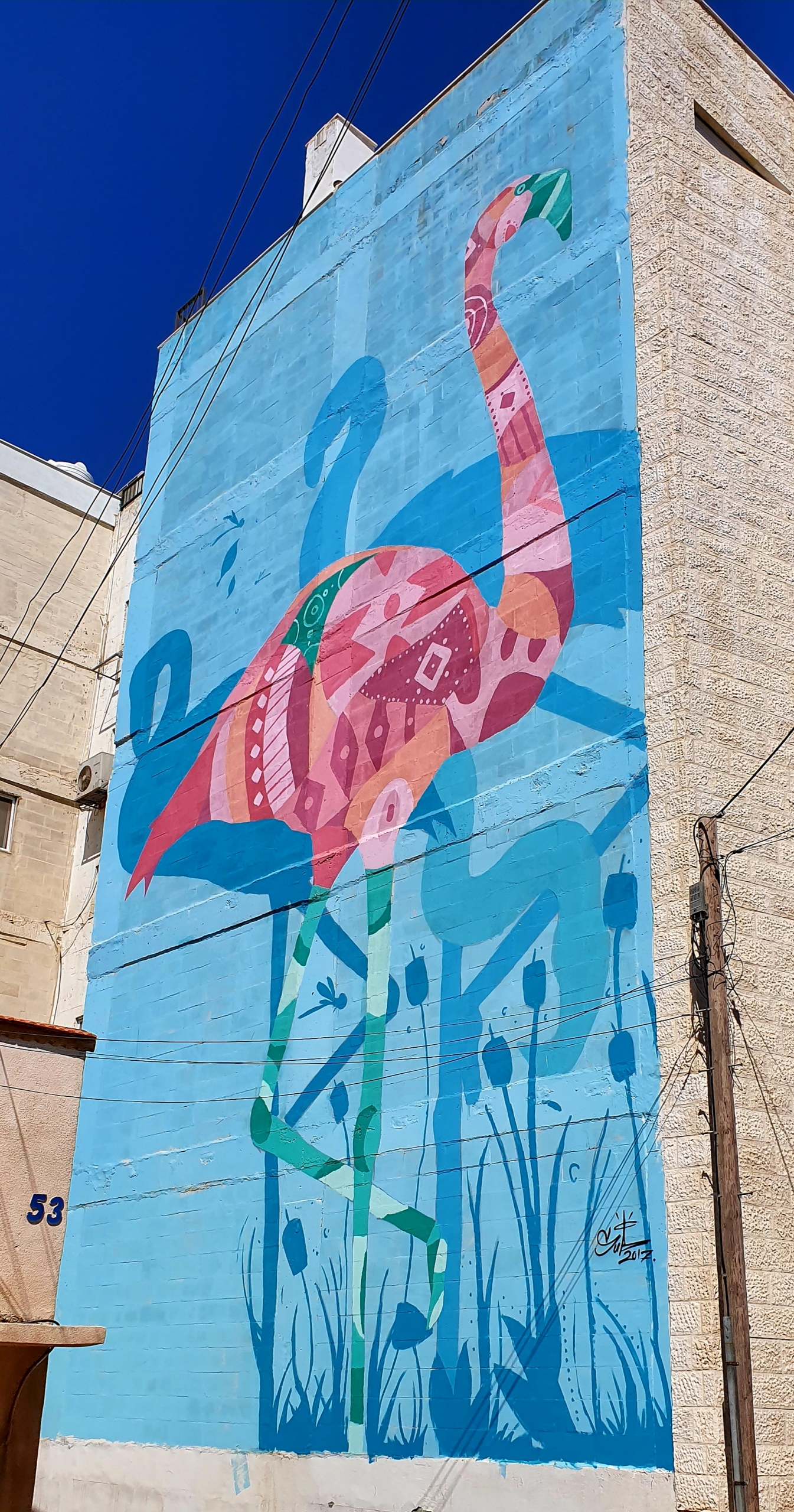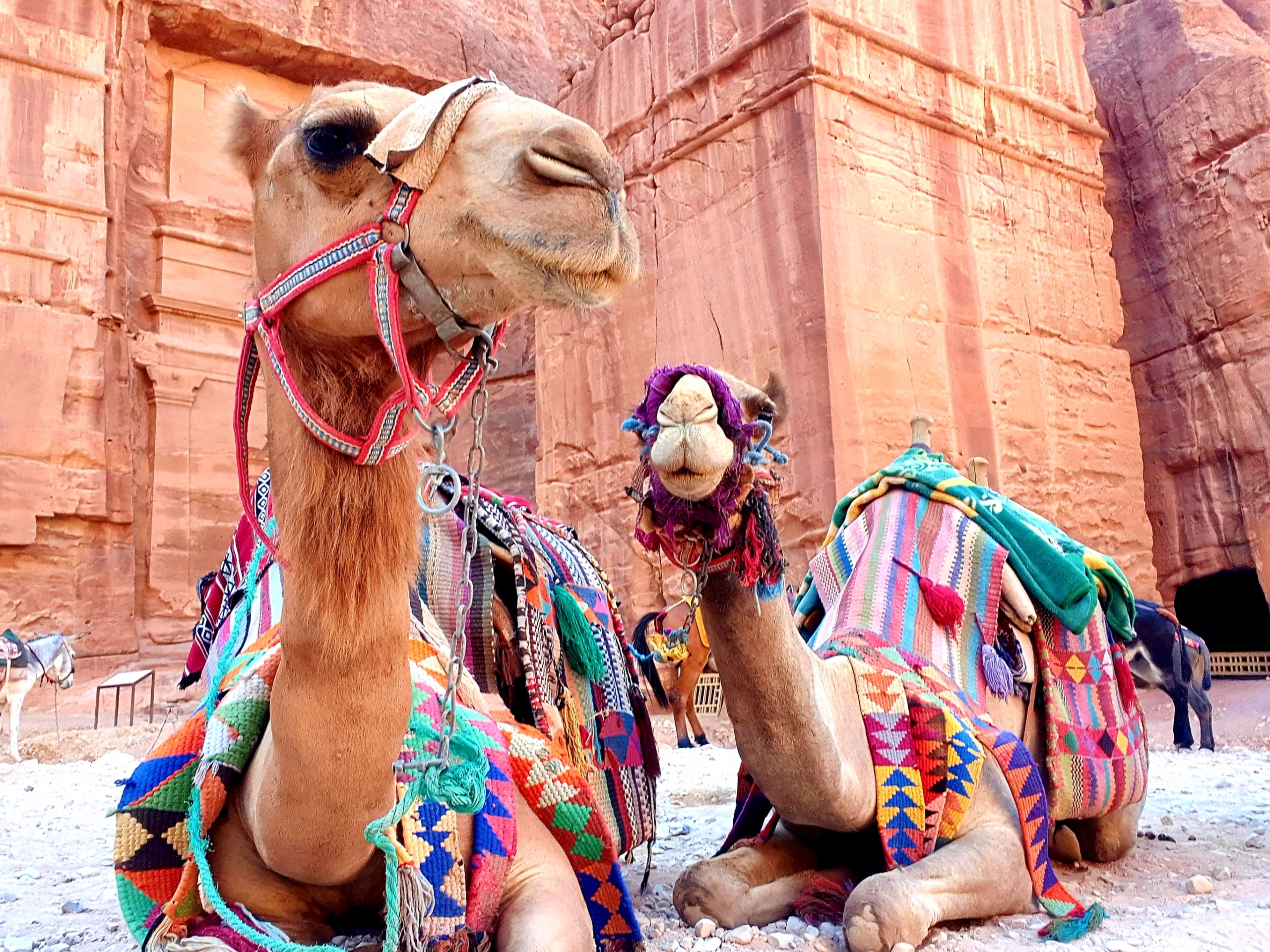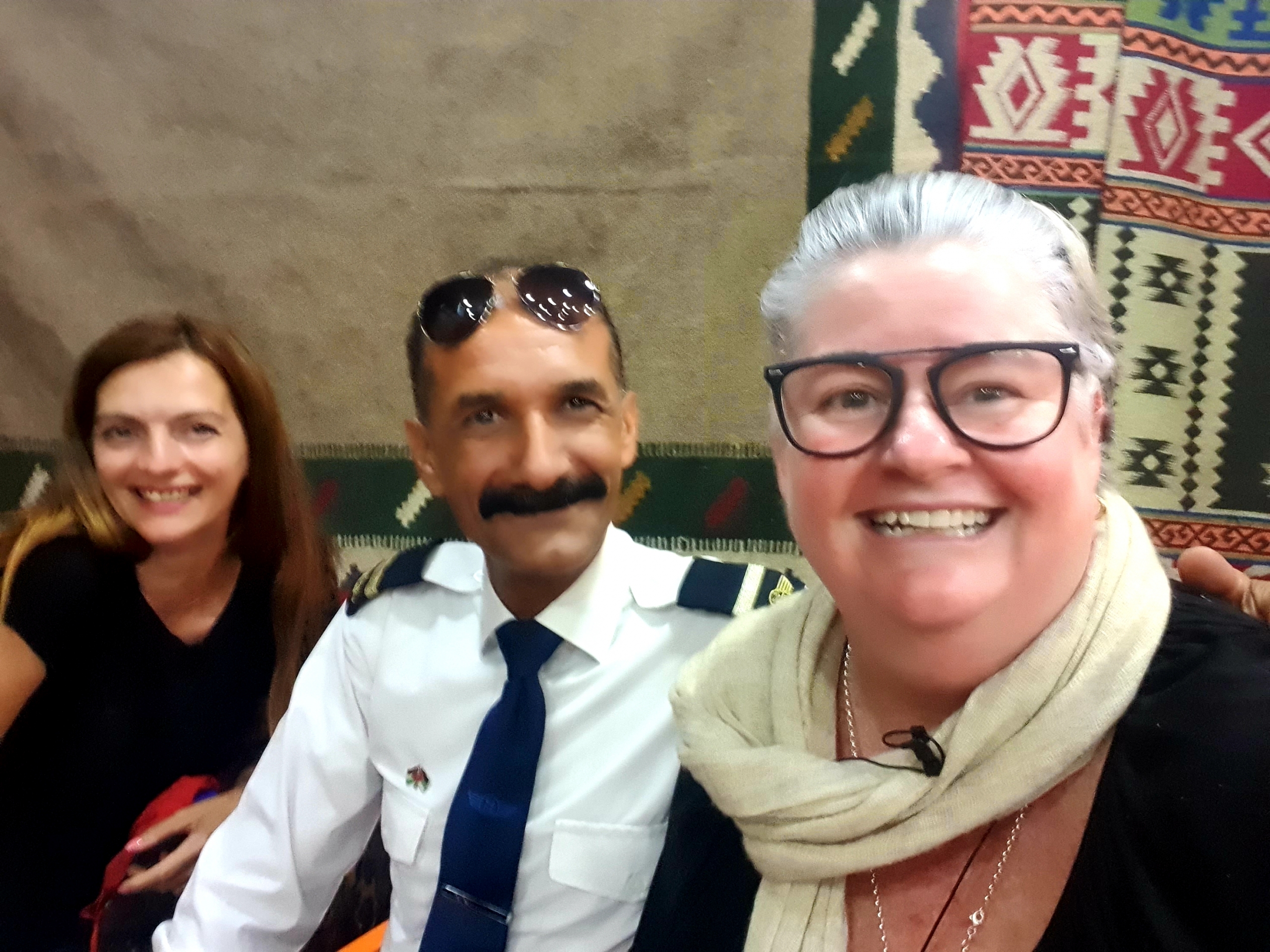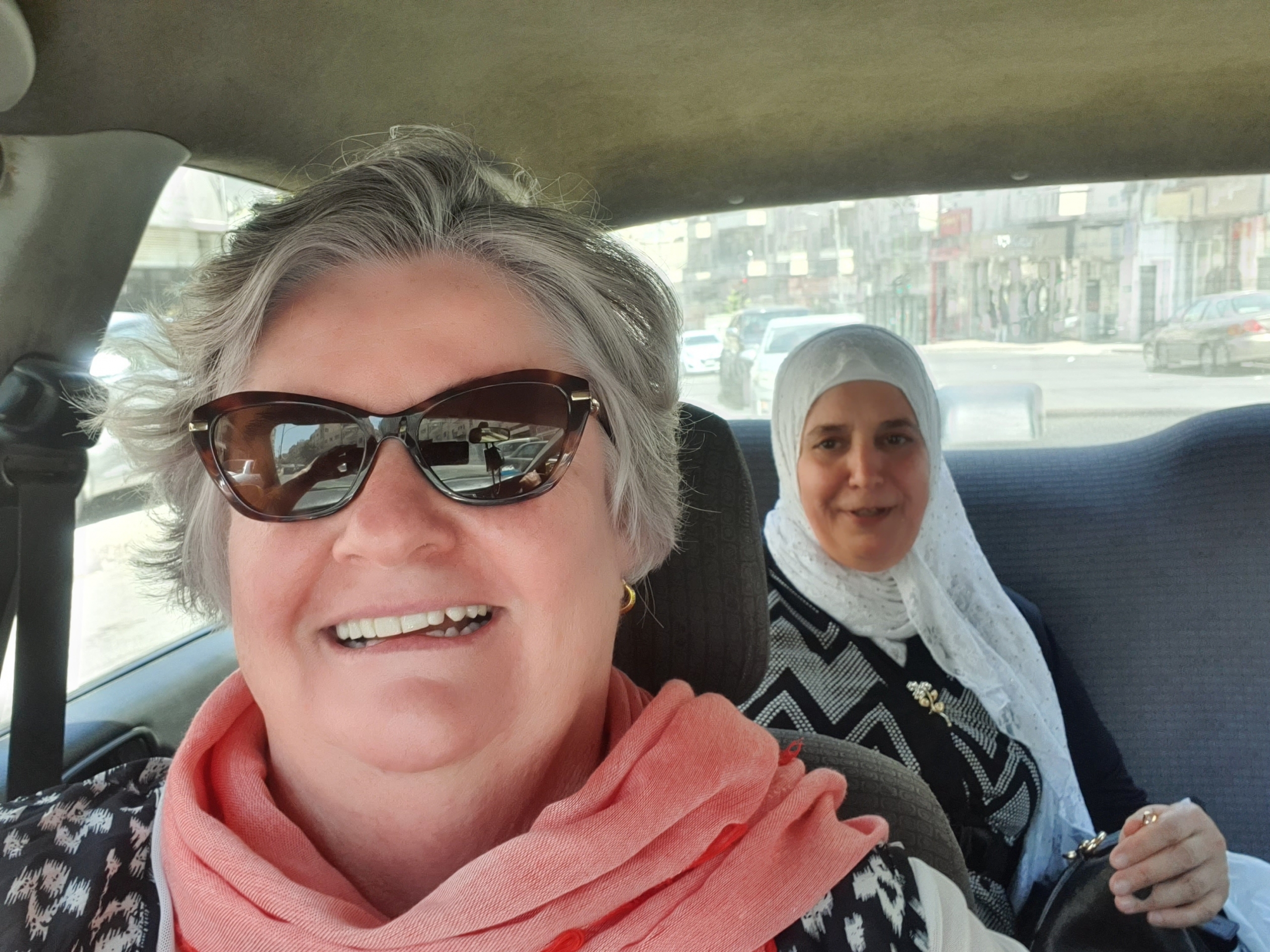During my trip planning for Jordan, I spent hours locating different antiquities and grouping these treasures into geographical locations. My purpose was to maximize my time so that I could visit several ruins daily. Unknowingly, I was remiss in reading the more intricate details of each site, especially about knowing the unique historical significances. In hindsight, this mistake has turned into a valuable lesson, giving me ample reasons to return to Jordan with my new-found knowledge for a more thorough exploration of these treasures. Come with me now on another Jordanian adventure of Um er-Rasas, El-Mahiak (I can’t even spell it correctly) and Hammam al- Sarah or Sarkh.
Um er-Rasas
Half an hour after I disembarked from a plane flight of 29 hours, I saw Um er-Rasas, my first stop, located conveniently close to Queen Alia Airport. My driver Ali drove me to this massive archaeological site, a fortified Roman military camp that grew into a town around the fifth century. I wandered leisurely through the unexcavated ruins, which contain remains from the Roman, Byzantine, and early third to ninth century Muslim periods. Having toured sixteen churches over this expansive site, I was most impressed with the noteworthy mosaic floor of the Church of Saint Stephen. According to the Greek script in the mosaic, this rendering gives both a great artistic and a geographical record, indicating the locations of several Palestinian and Egyptians towns in the former Byzantine Empire.
I found out later that there were other mosaic floors I had missed as I wandered around this vast site in Um er-Rasas. On Day One of my trip, I was about to start a catch phrase for the whole experience—“Oh, Well, I will have to come back again.” Some of the mosaics I missed included the Church of the Lions, the Church of Rivers, the Church of the Priest Wa’il, the Church of Bishop Paul, and the church of Bishop Sergius. I will certainly be excited to return here for glimpses of the vivid geometric mosaics depicting animals, birds, hunters, and fishermen.
Al Mahiak near Madaba and the Dead Sea
I am not sure whether I have correctly spelled the name of this next mosaic. I had repeatedly asked Ali for a proper spelling though I suspect a lot was lost in translation. This may be urban folklore or the real facts–I am not the one to judge, but the background story of this mosaic is unique. According to the Greek script in the mosaic, a family had been living in the dwelling when the relic was discovered. These people were given other living accommodations so that the mosaic contained on the church floor could be excavated. To see this marvel now, you pay an attendant 2JD, and he will open the door with a key.
To view the floor’s huge panoramic mosaic, enter the building and proceed onto an elevated platform extending around half the building’s interior. There are various depictions—domesticated animals such as donkeys, oxen, sheep, and birds such as peacocks—the appealing symmetry of heart shapes or patterns—even a singular person in a boat. Frustrated by my inadequate vocabulary at that time, I vowed to search out a more apt descriptor than the overused word “wonderful.” Sorry, but that’s impossible! The antiquities in Jordan are amazing or the biggest or the best, and EVERYTHING I see IS wonderful.
Hammam al- Sarah or Sarkh
Hammam al-Sarah, an Umayyad bathhouse, is located a few kilometers from Qasr al-Hallabat. Regrettably I did not visit this antiquity though for my next trip to Jordan, it is now on my to-do list. Hammam means “bathhouse.” It is my understanding that the solitary building is located behind an unlocked fence. Until I possess information to the contrary, I believe you can gain access by pushing open the gate. This Umayyad castle was abandoned around 750, and the site’s degradation has come about from people recycling the limestone over time. I believe there exist on site both a water-holding tank and a mosque.
The bathhouse design, similar to that of Qsar ‘Amra, comprises an Apodyteriun or undressing room, a Tepidarium or warm room, and a Caldarium or hot room. A cross- vaulted ceiling with holes for water drainage and groves serving as chimney-flues are clearly evidenced in the Tepidarium. At one time, the Calidarium may have been fitted with marble facings, and on the north wall, a tunnel acted as a stoke hole for the furnace.
I had a purely magical time exploring these remains. Starting a new list of Jordanian antiquities has allowed me the time to reflect on what I saw and new opportunities for another journey.






